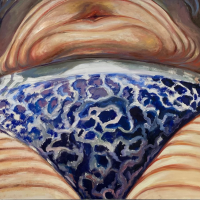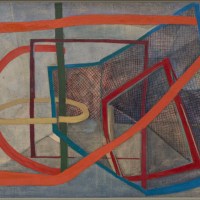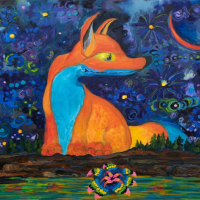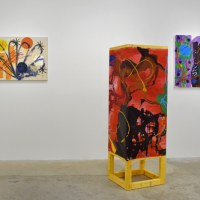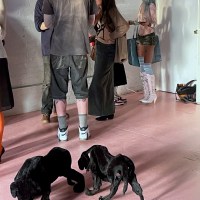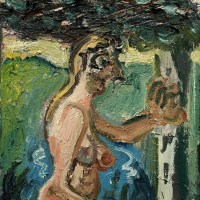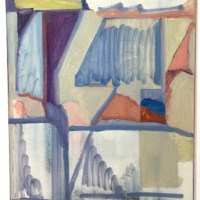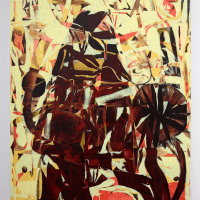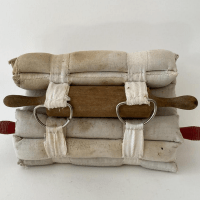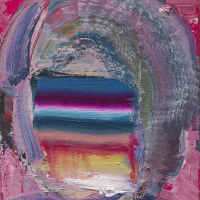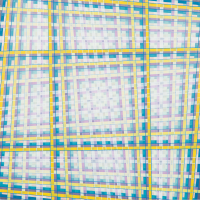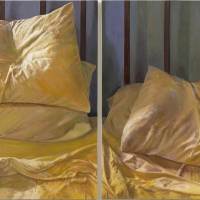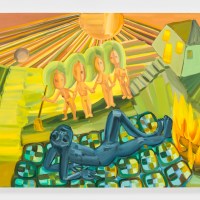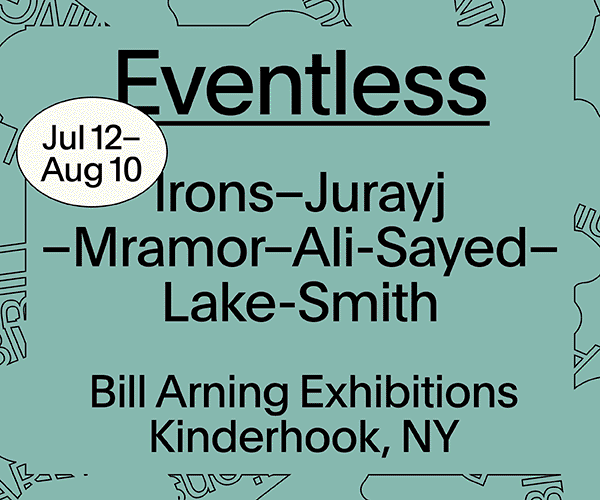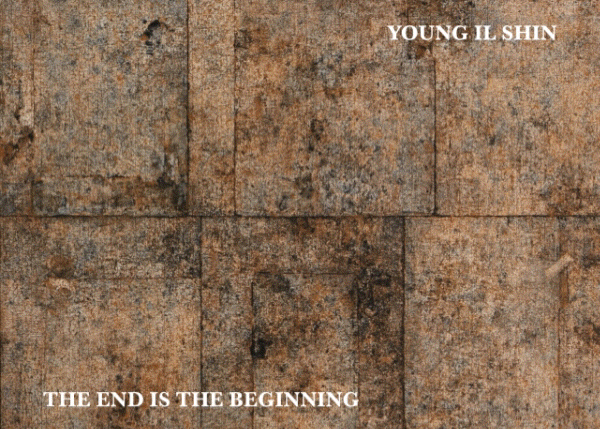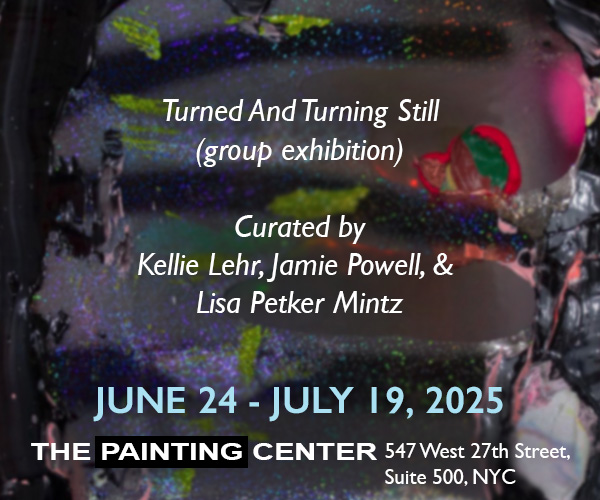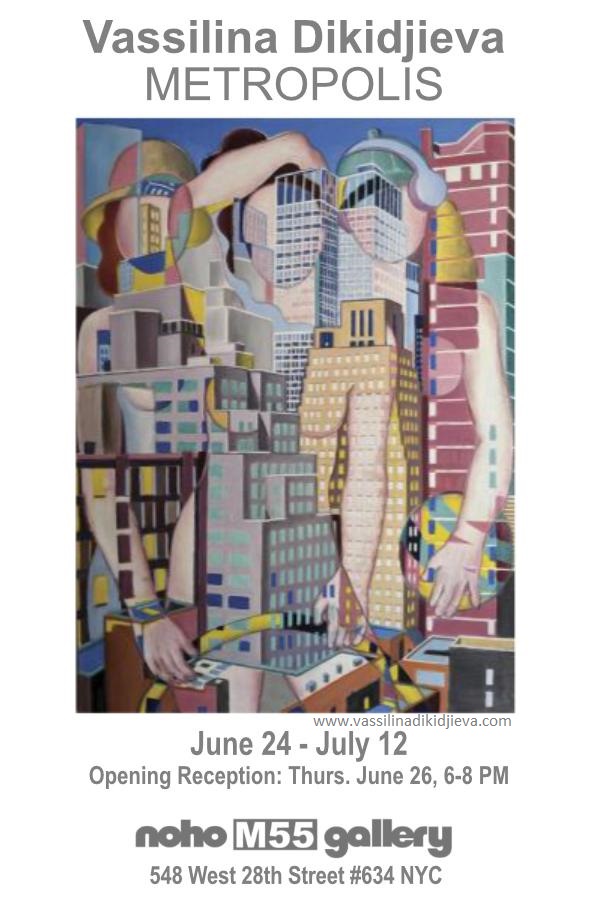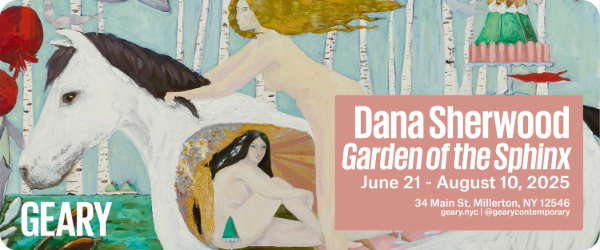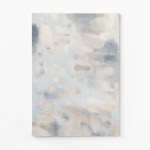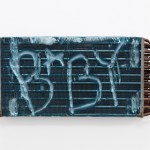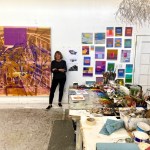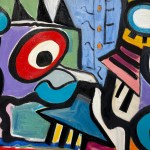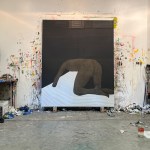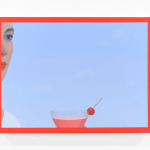Contributed by Amanda Church / Following the fleshy path of Rubens, Lucian Freud, Joan Semmel, and Cecily Brown, among many others, Camilla Fallon has recently focused her loose, lush brushwork on the female body’s midsection, specifically the navel. “The Navel Is the Center,” her current show at The Painting Center, consists of eight medium-scale paintings and four very small ones, most providing an intimate view of this inverted body part. Under such close scrutiny, it becomes symbolic, implying vulnerability, contemplation, and introspection.
Solo Shows
Maria Helena Vieira da Silva: Master of the grid
Contributed by David Carrier / Thanks to remarkably cultivated parents, Lisbon-born Maria Helena Vieira da Silva (1908–1992) was exposed to a lot of important art from early on. When she was just five, she saw the work of Paolo Uccello, a clear influence, in London’s National Gallery. Moving to France in 1928, Vieiro da Silva showed in Paris in the late 1920s and 1930s, took refuge from the German occupation during World War II in Brazil (her husband, Arpad Szenes, was a Hungarian Jew), and after the war returned to Paris, where she had a successful career. The expertly installed exhibition currently at the Peggy Guggenheim Collection in Venice aims to bring her art to the attention of contemporary audiences.
Jan Dickey: The art of breakdown
Contributed by Lucas Moran / In art, limitations often define, shape, and mold strengths. We can embrace drawbacks and spin them into gold. An impoverished de Kooning, living off ketchup packets and free coffee, turned to house paint to create some of his most compelling work. A bedridden Matisse cut paper. Scarcity, oppression, impairment – these forces have shaped the course of art history. Rather than relying on convention, Jan Dickey – investigator, tinkerer, and forager as well as painter – has immersed himself in studying how things break down, bond, and hold together. “The High Collapse,” now on view at 5-50 Gallery, is the culmination of that endeavor….
Benjamin Klein’s quiet defiance
Contributed by R. Blake Miller / Benjamin Klein’s solo exhibition “Sentinels and Satellites” at Tappeto Volante Gallery is at once enchanting and unnerving, like the fresh memory of a dream seen vividly even as it slips away. With an unapologetically saturated palette, the Brooklyn-based artist lays down paint in both translucent coats of tinted light and thick pools, blending natural textures with sublime color-mixing techniques. A surreal story involving animals and their plant counterparts unfolds. What initially feels inviting and innocent becomes tinted by dread. Mythic symbols hover beyond easy reading, coaxing viewers to explore their relationships with art more deeply.
Rick Briggs’s compositional irreverence
Contributed by Jason Andrew / It’s refreshing and a little humbling to walk into a gallery and be blitzed by art that’s cleverly derived from years of play, probing, and practice. Rick Briggs’s solo show at Satchel Projects shows us how open-ended and liberating painting can be.
Curtis Mitchell’s powerfully oblivious dogs
Contributed by Adam Simon / I tend to rail against art openings. Few attendees of a crowded art opening ever get to really see the show; the glimpses they’re afforded are more like scrolling Instagram than anything approaching contemplation. I felt differently at the opening of Curtis Mitchell’s pop-up show “19 Black Dogs” at the untraditional talent agency called No Agency on Bowery. The work does lend itself to contemplation, but at the opening of this show, Mitchell’s sculptures – stuffed dogs he purchases on the internet and then abuses in various ways – were contextualized by a young, hip crowd, connected I assume to No Agency rather than to Mitchell. Some appeared to be fashion models.
Dan Schein’s muddy sublime
Contributed by Lucas Moran / On Instagram, where most artists list their websites, exhibitions, and accomplishments beneath their handles, Dan Schein keeps it simple: “artist/painter,” followed by “Person Who Stutters.” It’s fitting for a painter whose work, some now on display at JJ Murphy Gallery, feels as though it may sometimes have a tough time coming out of him. But Schein, a painter’s painter, knows how to elicit beauty from struggle….
Pierre Obando’s potent hybrids
Contributed by Michael Brennan / Pierre Obando presents ten paintings, made between 2021 and 2025, in “Some Kind…,” his first exhibition at the Bushwick salon Starr Suites. While his imagery is for the most part recognizably organic, it is not easily decipherable.
Ray Hwang’s schematic dexterity
Contributed by Kate Sherman / “Ghost Coast,” Ray Hwang’s solo show at Tempest Gallery in Ridgewood, conjures an alchemical whirlpool of memory, meaning, and the self. In the line of sight from the gallery’s entrance hangs where there’s smoke-, a large and densely layered painting that evokes stained glass reliquaries or maybe a personal treasure map of candle-lit memories….
Divergent simplicities: Diana Horowitz and Janice Redman
Contributed by Margaret McCann / In two shows at Bookstein Projects, excess and essence complement one other from opposite ends of simplicity. Janice Redman’s “Rough Alchemy” in the side gallery presents mostly small, hand wrought sculptures that project vulnerability, earnestly offering themselves in all their imperfections to our subjective examination. In the main gallery, Diana Horowitz’s “Light is a Place” highlights objectivity in landscape paintings that broadcast optical truth from across the room despite their tiny size. In portraying distance, they keep their own, reticently holding the walls.
In Conversation: Diana Copperwhite and Erin Lawlor
In this thoughtful exchange, artist Erin Lawlor talks to Diana Copperwhite about the role of intuition and emotion in their work, their love of music, and their mutual interest in painter Howard Hodgkin. Copperwhite’s paintings will be on view alongside Hodgkin’s work at the Auckland Art Fair from May 1-4, and Lawlor ‘s solo “Divining” opens at the Highlanes Municipal Gallery in Ireland on April 26.
Rob de Oude: See what happens
Contributed by Jacob Cartwright / It is no contradiction to observe that Rob de Oude paintings in his solo show “Rhyme and Repeat” at McKenzie Fine Art are created with an exceedingly sober methodology, yet achieve intoxicating outcomes. To make something and to see something are two different things, and revealing the interrelationship between them— as de Oude’s do— is one of the greatest pleasures that paintings can offer. While it may seem inapt to call such an exacting technician an experimental painter, the designation fits. De Oude conducts his investigations in the controlled environment of his studio, where variables are adjusted with one goal in mind: to see what happens.
Catherine Murphy’s intimate realism
Contributed by Peter Schroth / At Peter Freeman, Inc., esteemed realist Catherine Murphy resurfaces with a new selection of her novel perceptions of the quotidian. In Cathy and Harry, a new documentary about the life, work, and marriage of Murphy and her husband Harry Roseman, also an artist, Murphy says that one of her prime objectives is to express “universal objectivity.” Against some strands of painting tradition, she chooses subjects so mundane as to be otherwise unremarkable, indicating a gentle contrariness.
Enzo Shalom’s meandering brush
Contributed by Sharon Butler / On view in the upstairs gallery at Bortolami, Enzo Shalom’s paintings – modest in image and muted in palette – carry a quiet intensity that has felt rare among young New York painters in recent years. At a time when traditional painterly bravado dominates, Shalom takes a different route, making vulnerability seem like a radical act. His work leans into restraint: awkward angles, washed-out tones, and just enough mark-making to read as intentional without seeming overworked. If you can imagine early Luc Tuymans’ bleached-out hues, EJ Hauser’s jagged lines, and Gary Stephan’s off-kilter compositions, you’ll land somewhere near the world of Shalom’s paintings. It’s a subdued, thoughtful space, low-key but deeply engaging.
Judith Linhares: Good gaudy painting
Contributed by Jason Andrew / Judith Linhares has a fascination with bad taste, the oh-too beautiful, and the color yellow. In her third solo exhibition at PPOW, she doesn’t hold back packing the gallery with paintings that feature strange figurative archetypes, gaudy décor, and kitschy bits all in an embrace of the subversive potential of visual excess.

